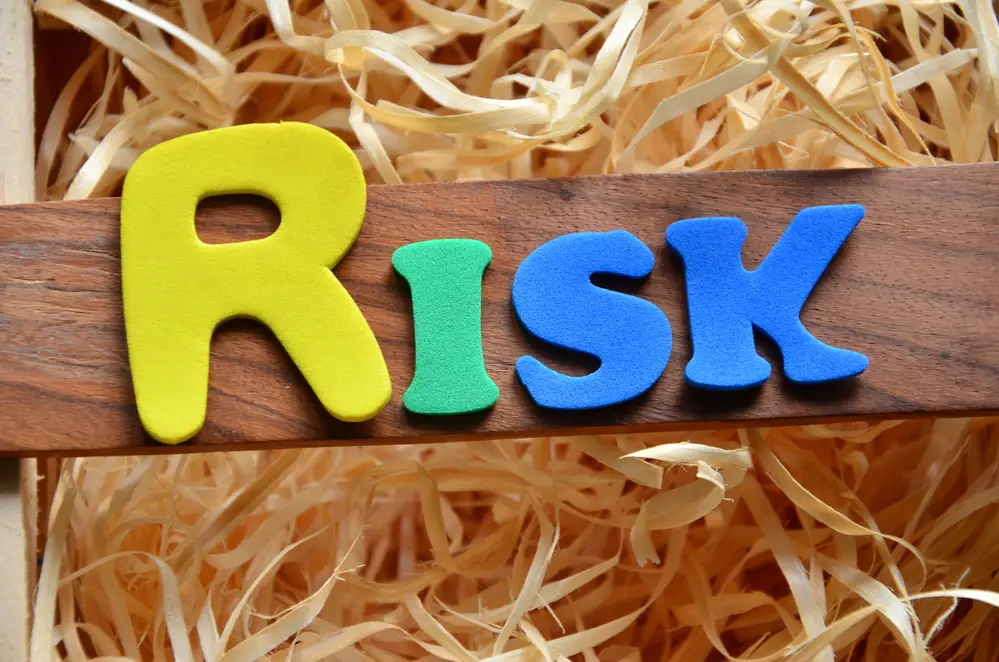As the impacts of climate change become increasingly apparent, understanding and addressing climate risks has never been more critical. Climate risk assessment is a vital tool for businesses, governments, and communities to identify, evaluate, and manage the uncertainties associated with climate change.
In this comprehensive guide, we will walk you through the fundamentals of climate risk assessment, the process of establishing a framework, assessing vulnerability and exposure, building resilience and adaptation strategies, and effectively communicating your findings.
Understanding the Fundamentals of Climate Risk Assessment
Climate risk assessment is the process of evaluating the potential consequences of climate change on various aspects of society and the environment. This section will introduce key concepts and terminology, identify the main drivers of climate risk, and discuss the role of climate models in risk assessment.

Defining Climate Risk: Key Concepts and Terminology
To effectively carry out a climate risk assessment, it’s essential to understand the following key concepts and terminology:
- Climate risk: The potential adverse effects of climate change on human and natural systems, including social, economic, and environmental impacts.
- Vulnerability: The susceptibility of a system, community, or asset to harm from climate change, determined by factors such as exposure, sensitivity, and adaptive capacity.
- Exposure: The presence of people, ecosystems, or assets in areas likely to experience the impacts of climate change.
- Sensitivity: The degree to which a system, community, or asset is affected by climate change.
- Adaptive capacity: The ability of a system, community, or asset to adjust to climate change and cope with its consequences.
Identifying the Main Drivers of Climate Risk
Climate risk assessment must consider various drivers of climate risk, including:
- Greenhouse gas emissions: The primary driver of climate change, leading to increased global temperatures, sea-level rise, and more frequent and intense extreme weather events.
- Land-use changes: The conversion of natural habitats to agricultural or urban areas can exacerbate climate risks by reducing ecosystems’ ability to absorb carbon dioxide and increasing vulnerability to climate impacts.
- Socioeconomic factors: Population growth, urbanization, and economic development can increase exposure and vulnerability to climate risks, especially in low-income communities and developing countries.
- Government policies and regulations: Climate policies, such as emissions reduction targets and adaptation planning, can significantly influence the level of climate risk faced by businesses and communities.
The Role of Climate Models in Risk Assessment
Climate models are crucial tools for understanding the potential impacts of climate change and informing risk assessment. They simulate the Earth’s climate system, including the atmosphere, oceans, land surface, and ice, using mathematical equations based on physical principles.
Climate models can project future changes in temperature, precipitation, sea-level rise, and extreme weather events under various greenhouse gas emissions scenarios.
Establishing a Climate Risk Assessment Framework
A well-designed climate risk assessment framework helps ensure a systematic and comprehensive approach to identifying, evaluating, and managing climate risks. This section will discuss setting the scope and objectives, selecting relevant climate variables and scenarios, and developing a timeline for analysis and monitoring.
Setting the Scope and Objectives of the Assessment
Before embarking on a climate risk assessment, it’s crucial to define its scope and objectives. This involves:
- Identifying the system, community, or assets being assessed: Determine the focus of the assessment, such as a specific geographic region, business sector, infrastructure project, or natural resource.
- Defining the assessment’s purpose: Establish clear goals, such as informing decision-making, identifying adaptation options, or complying with regulatory requirements.
- Determining the assessment’s scale and resolution: Choose an appropriate spatial and temporal scale for the analysis, considering the size of the area, the complexity of the system, and the availability of data.
Selecting Relevant Climate Variables and Scenarios
To conduct a climate risk assessment, you need to consider various climate variables and scenarios that are relevant to your specific context. This involves:
- Identifying key climate variables: Determine the climate variables most relevant to your assessment, such as temperature, precipitation, sea-level rise, and extreme weather events.
- Selecting climate change scenarios: Choose representative concentration pathways (RCPs) or shared socioeconomic pathways (SSPs) to represent different possible future climate conditions based on greenhouse gas emissions and socioeconomic factors.
- Gathering historical and projected climate data: Obtain high-quality data from reputable sources, such as the Intergovernmental Panel on Climate Change (IPCC), national meteorological agencies, or regional climate centers.
Developing a Timeline for Analysis and Monitoring
Establishing a timeline for your climate risk assessment involves:
- Selecting a baseline period: Choose a historical period to serve as a reference for assessing current vulnerability and exposure to climate risks.
- Defining future time horizons: Determine the timeframes for assessing future climate risks, such as short-term (10-30 years), medium-term (30-60 years), and long-term (60-100 years).
- Establishing a monitoring plan: Create a plan for regularly updating the assessment to incorporate new data, evaluate the effectiveness of adaptation measures, and adjust strategies as needed.
Assessing Vulnerability and Exposure to Climate Risks
A thorough climate risk assessment must evaluate the vulnerability and exposure of your system, community, or assets to climate risks. This section will discuss identifying and prioritizing vulnerable assets and populations, evaluating the magnitude and likelihood of climate impacts, and mapping spatial and temporal exposure patterns.
Identifying and Prioritizing Vulnerable Assets and Populations
To effectively manage climate risks, you need to identify and prioritize vulnerable assets and populations:
- Conduct a vulnerability assessment: Analyze the sensitivity and adaptive capacity of your assets or populations to determine their vulnerability to climate risks.
- Prioritize vulnerable assets and populations: Rank assets and populations based on their vulnerability and the potential consequences of climate impacts, focusing on those with the highest risk.
Evaluating the Magnitude and Likelihood of Climate Impacts
Assess the potential consequences of climate change on your system, community, or assets by evaluating the magnitude and likelihood of climate impacts:
- Estimate the severity of climate impacts: Assess the potential damage, disruption, or loss associated with each climate risk, considering factors such as asset value, population density, and ecosystem services.
- Evaluate the probability of climate impacts: Estimate the likelihood of each climate risk occurring, based on historical trends, climate model projections, and expert judgment.
Mapping Spatial and Temporal Exposure Patterns
Visualize the distribution of climate risks by mapping spatial and temporal exposure patterns:
- Create exposure maps: Use geographic information systems (GIS) to display the spatial distribution of climate risks, vulnerable assets, and populations.
- Analyze temporal exposure patterns: Examine how exposure to climate risks may change over time, considering factors such as climate change, land-use change, and population growth.
Building Climate Resilience and Adaptation Strategies
Effective climate risk assessment should lead to the development of resilience and adaptation strategies. This section will discuss analyzing adaptive capacity and opportunities for intervention, developing and prioritizing climate adaptation measures, and monitoring and evaluating the effectiveness of adaptation strategies.

Analyzing Adaptive Capacity and Opportunities for Intervention
To build resilience to climate risks, evaluate your system’s adaptive capacity and identify opportunities for intervention:
- Assess adaptive capacity: Analyze the ability of your system, community, or assets to adjust to climate change, considering factors such as technological advancements, financial resources, and institutional capacity.
- Identify intervention opportunities: Determine areas where adaptive capacity can be enhanced and vulnerabilities reduced, focusing on cost-effective and feasible solutions.
Developing and Prioritizing Climate Adaptation Measures
Develop a range of adaptation measures to address climate risks and build resilience:
- Generate a list of potential adaptation options: Consider measures such as infrastructure upgrades, policy changes, ecosystem restoration, and community education.
- Prioritize adaptation measures: Evaluate the potential benefits, costs, and feasibility of each option, and rank them according to their overall effectiveness and alignment with your objectives.
Monitoring and Evaluating the Effectiveness of Adaptation Strategies
Ensure the success of your adaptation strategies by establishing a system for monitoring and evaluation:
- Develop performance indicators: Create measurable indicators to track the progress and effectiveness of adaptation measures, such as reduced vulnerability, improved resilience, or enhanced adaptive capacity.
- Monitor and evaluate adaptation strategies: Regularly collect data on performance indicators, and use this information to assess the success of adaptation measures and adjust strategies as needed.
Communicating Climate Risk Assessment Findings
Effectively communicating your climate risk assessment findings is crucial for engaging stakeholders, informing decision-making, and fostering a culture of climate risk awareness and preparedness.
This section will discuss engaging stakeholders and decision-makers, visualizing and communicating complex climate risk information, and fostering a culture of climate risk awareness and preparedness.
Engaging Stakeholders and Decision-Makers in the Process
Ensure that your climate risk assessment is relevant, actionable, and well-received by engaging stakeholders and decision-makers throughout the process:
- Identify key stakeholders: Determine the individuals and organizations that have an interest in or influence over your assessment, such as community members, business owners, government agencies, and non-governmental organizations.
- Involve stakeholders in the assessment: Seek input from stakeholders on the scope, objectives, and findings of the assessment, and involve them in the development and implementation of adaptation strategies.
Visualizing and Communicating Complex Climate Risk Information
Make your climate risk assessment findings accessible and engaging by visualizing and communicating complex climate risk information:
- Use clear and simple language: Avoid jargon and technical terms, and present your findings in a way that is easily understood by a non-expert audience.
- Create compelling visuals: Use maps, graphs, and other visual aids to convey key information, such as the distribution of climate risks, vulnerable assets, and populations, or the potential benefits of adaptation measures.
- Tell a compelling story: Craft a narrative that highlights the importance of addressing climate risks and the potential benefits of building resilience and implementing adaptation strategies.
Fostering a Culture of Climate Risk Awareness and Preparedness
Promote a culture of climate risk awareness and preparedness within your organization or community by:
- Raising awareness of climate risks: Use educational materials, workshops, and public outreach campaigns to inform stakeholders about the potential impacts of climate change and the importance of climate risk assessment.
- Encouraging action: Empower stakeholders to take steps to reduce their vulnerability to climate risks and contribute to the development and implementation of adaptation strategies.
- Recognizing success: Celebrate achievements in climate risk assessment, resilience building, and adaptation, and share lessons learned and best practices with others.
Conclusion
The stakes of climate risk assessment are only growing. With the potential for unprecedented losses due to extreme weather events and other climate-related threats, now is the time to become knowledgeable about how to effectively assess and address climate risk.
Practitioners need to understand both where climate risks are most acute, as well as how vulnerable assets and populations may be affected. Through a comprehensive risk assessment approach that takes into account both exposure patterns and magnitude of impacts, organizations can build resilient futures and take control of their destinies in the face of mounting climate uncertainty.
Climate models offer a valuable tool that practitioners can use to identify and prepare for extreme events under various future scenario’s. That said, it is essential that all stakeholders collaborate on climatic impact mitigation strategies in order to ensure effective adaptation outcomes.
Reaching this standard will require shared knowledge, resources, and a commitment to taking action together—but it can be done. With discipline, data-driven decision making, adaptive responses informed by risk models, proactive preparation for varying scenarios—and with public policies better prepared for worst-case scenarios—we can put ourselves in the driver’s seat when it comes to mitigating the effects of our changing world.

Chris Ekai is a Risk Management expert with over 10 years of experience in the field. He has a Master’s(MSc) degree in Risk Management from University of Portsmouth and is a CPA and Finance professional. He currently works as a Content Manager at Risk Publishing, writing about Enterprise Risk Management, Business Continuity Management and Project Management.


